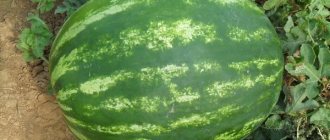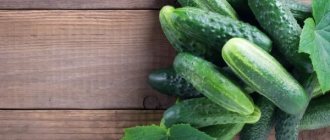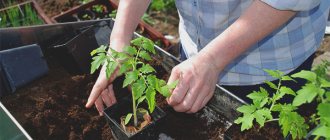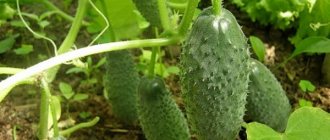History of the variety's creation
The Nutcracker F1 eggplant was bred by breeders from an agricultural plant located in the Moscow region in the last quarter of the last century. This eggplant was introduced to the Russian State Register in 1998.
After variety testing in 2001, this hybrid was included in the State Register.
The originators recommended planting this hybrid in heated and unheated greenhouses in light zones 1 and 3 of the country. This vegetable plant can be planted in garden beds only in the south of the country, because good yields from eggplants are obtained in regions with a sufficient number of sunny days, and the air temperature should be above 17 degrees Celsius.
Photo of eggplant Nutcracker F1
Growing methods
Eggplant is a crop that requires special attention. They have a long growing season, so the method of cultivation directly depends on the climatic conditions of the region. If the summer is short, then the difficulty increases. Eggplants are grown in two ways:
- seedless;
- seedlings
The first will be justified only in southern regions with stable weather. In other regions, it will be safer to grow eggplant seedlings and then transplant the plants to a permanent location. Some gardeners prefer open ground, others prefer a greenhouse. What influences the choice of soil? For the timing of sowing seeds and planting seedlings. If the Nutcracker F1 f1 eggplant is planned to be grown in a greenhouse, then the planting time will be earlier than for open ground. The agrotechnical requirements of “Nutcracker F1a” are almost identical in both cases, only the greenhouse version requires careful maintenance of temperature and humidity.
Eggplant Nutcracker F1: variety description
The Nutcracker hybrid is classified as a medium-early eggplant in terms of ripening time.
– the harvest begins 3.5 months after the sprouts appear, or 1.5 months after the seedlings are planted in the beds.
The bushes of this hybrid are strong and powerful, semi-spreading. The height of medium-leafy shoots when grown in garden beds is about 1.0 m, when grown in greenhouse conditions - 1.6-1.7 m
. The shoots have thorns, the foliage is large, round, slightly wrinkled, with smooth edges, slightly thorny, light green in color.
A large number of ovaries gradually form on the bushes, so the fruiting of the Nutcracker eggplant is extended over time.
The shape of mature eggplants is spherical or pear-shaped, they can be about 16 cm in length. The weight of the fruits is up to 250 g, and if agrotechnical measures are followed, the weight of the eggplants increases to 700 g
. However, in large fruits the seeds become dense, and the taste of the eggplant Nutcracker pulp acquires a characteristic astringency.
Review of Eggplant Nutcracker F1 - video
The skin of eggplants is dense, but thin, with a characteristic shine, smooth, and dark purple in color. The pulp is compacted, tender with an average number of small seeds. The color of the pulp is boiling white. The taste of ripe eggplants is good, pleasant, there is no bitterness in the taste.
On a note!
Ripe Nutcracker eggplants can be transported to any place; the fruits are stored for a long time, usually they do not lose their elasticity and excellent taste.
Advantages and disadvantages, features, differences from other varieties
Like other high-yielding hybrids, Nutcracker f1 eggplant is recommended to be grown in a greenhouse or, at least, under film cover. However, you should not immediately rule out the seedless method.
If Nutcracker eggplants are planned to be grown in a greenhouse, then the planting time will be earlier than for open ground. The agrotechnical requirements of “Nutcracker F1” are almost identical in both cases, only the greenhouse version requires careful maintenance of temperature and humidity parameters.
It is timing that plays an important role in growing Nutcracker F1 eggplant seedlings. If the seedlings are planted too early, by the time they are transplanted into the ground they will become elongated, which will negatively affect the further development of the plants. If you are late, the Nutcracker F1 seedlings will need to be planted later. Accordingly, the yield will be lower or the fruits will not reach the desired ripeness by the time of harvest.
Expert opinion
Filatov Ivan Yurievich, private farmer for more than 30 years
Seedlings are planted in a permanent place at the age of 65-70 days. Another week passes before the first shoots appear. Only 75-80 days. It is better to plant seedlings in open ground no earlier than mid-June; in the southern regions and in a greenhouse - in the second half of May. It is not recommended to move seedlings to a permanent place before.
The eggplant hybrid “Nutcracker F1” loves light and warmth. At temperatures below 20 °C, flower pollination does not occur and fruits do not set on the bushes. Below 15 °C, buds and ovaries have already formed. Therefore, it is not advisable to rush to transfer plants into the soil.
You can approximately determine the day of planting Nutcracker F1 seedlings using:
- lunar calendar recommendations;
- weather forecast for the current year in the region (soil temperature at least 20 °C);
- growing conditions (indoor or open ground).
Subtract 80 days from the obtained date, as a result of sowing the seeds of the variety. The date is between mid-February and the first ten days of March. Of course, this is not the only condition. The further condition of the Nutcracker F1 seedlings depends on the quality of care.
Sowing seeds
Initially, the selection of “Nutcracker F1” eggplants for sowing is carried out. All material prepared for sowing is soaked in water at room temperature. It is better to schedule this operation 3-5 days before the sowing date in order to have time to carry out all the preparatory work. Eggplant seeds that float on the surface are removed. Only those that drown in the water remain for sowing.
Do you think it is necessary to process eggplant seeds?
Not really
The selected Nutcracker eggplant seeds are wrapped in wet gauze or cloth before sowing. The fabric remains damp all the time. It is very good to use a biostimulant solution - potassium humate, Zircon or Epin - instead of clean water.
The second option used by vegetable growers is to change the temperature. For 7 days, planting material is stored during the day and placed in the refrigerator at night.
- turf soil - 2 parts;
Stir the ingredients and bake in the oven. In addition, the mixture should be spilled with a strong solution of potassium permanganate and washed off, you will also need to do:
- Containers are selected taking into account the fact that the seedlings are to be transplanted. Therefore, it is good to use peat cups or plastic containers with a sliding bottom. This will save the roots of the Nutcracker F1 seedlings from injury.
- Wash the container with potassium permanganate solution, dry it, and then fill it with soil. Be sure to place a drainage layer on the bottom of the dish.
- Moisten the soil with a spray bottle and make furrows into which the Nutcracker F1 eggplant seeds are placed. Before sowing, soak the seeds for 15 minutes in a fungicide solution to disinfect.
- Eggplant seeds should be covered with no more than 1.5 cm and sprinkled with soil. Cover the container with plastic and set aside until emerging. At this time, it is necessary to open the crops and, if necessary, moisten the soil.
The bed for eggplant “Nutcracker F1” must be prepared in advance. The earth is fertilized, dug up:
- In the greenhouse, they are additionally treated with a hot solution of potassium permanganate. 2 weeks before the planned date, planting is done from wood ash (1 liter of powder per 1 linear meter).
- The holes are located at a distance of 60 cm or more from each other. In a greenhouse it is better to plant a hybrid eggplant f1 Nutcracker in the form of a chessboard. This is due to the structure of the bush. The Nutcracker F1 eggplant has a spreading bush that requires plenty of space.
Plants are watered an hour before transplanting. Planted with a depression up to the cotyledon leaves and watered. It is good to immediately cover the soil with humus or peat.
Caring for plants requires certain conditions:
- Regular weeding and loosening of beds. To reduce the number of weeds, the soil is covered with mulch. If you notice that the roots of “Nutcracker F1” are bare, add a layer of mulch. Loosen at least once every 2 weeks. It is important to do this carefully so as not to damage the roots.
- Watering. After planting in the ground, the seedlings are not watered for a week. "Nutcracker F1" loves water, but in moderation. If you allow waterlogging, the plant is affected by root rot. When growing in a greenhouse, it is necessary to regularly ventilate the room. Most of all, the Nutcracker F1 eggplant requires watering during the ripening season. If it is very hot, watering is repeated after 2-3 days. At normal temperatures, it is enough to moisten the plants in the evening once a week. Spraying for Nutcracker F1 eggplants is contraindicated; installing drip irrigation would be ideal.
- Feeding. The hybrid is characterized by a high yield, so feeding should be carried out regularly. For the first time, plants will need food 2 weeks after planting. It must contain nitrogen. In the next feeding, nitrogen is not added, but more is made of potassium and phosphorus. Feeding is repeated regularly once every 3 weeks. Complex fertilizers (Master, Agricola, Hera, Novofert) and folk remedies are suitable for this purpose. To feed, use an infusion of ash, nettle, bird droppings and mullein. If you want to feed the bushes leaf by leaf, you can do this no more than once a month.
- Garter and shaping. Eggplant varieties “Nutcracker F1” require the formation of a bush. To prevent the fruits from lying on the ground, the plant is tied to supports at 2-3 points. With a bush height of 35 cm, the upper part is pinched. Then the 3-4 most powerful ones are selected from the side shoots, the rest are reduced to the growth point. Some vegetable growers form a bush in one stem. This is best done in a greenhouse.
If this is not done, the harvest will consist of only small eggplants.
Eggplant is deservedly considered a rather capricious and demanding crop, but the Nutcracker F1 hybrid is a pleasant exception. It is relatively unpretentious; even a novice gardener can cope with cultivation.
Work in the garden
The soil in the garden bed needs to be regularly weeded and loosened. Mulch will help save time on weeding. Loosening should ideally be carried out after each watering or at least once every 10–12 days. If the roots of eggplants become bare, add fresh substrate or humus to the base of the stem. They are very delicate and dry quickly.
The root system of eggplants is superficial, so the soil around the stems is loosened very carefully. But the soil between the rows is loosened to a depth of 8–12 cm. This promotes good aeration and does not allow moisture to stagnate at the roots.
Mulch under eggplants will help retain moisture in the soil and slow down the growth of weeds.
Eggplant is a moisture-loving crop, but you should not be too zealous with watering. In waterlogged soil, root rot develops very quickly. These plants do not like humid air, so the greenhouse must be ventilated regularly. Another argument in favor of ventilation is that when air humidity is high, the pollination process is very poor. But such an atmosphere is loved by the causative agents of most fungal diseases and many pests.
In the first 7–10 days after transplanting into the ground, eggplants are not watered at all. Moistening the soil at this time can further weaken plants that are already under severe stress. Then the substrate should always be moderately moist. If it often dries out, the plant begins to shed its leaves and ovaries.
Water for irrigation is used only when heated to a temperature of 25–30ºС. The best time for the procedure is the evening after sunset. Water the eggplants carefully at the root or pour water into the grooves between the rows of plantings. If technically possible, drip irrigation can be organized. But sprinkling is strictly contraindicated for the Nutcracker.
Fertilizer application
Nutcracker eggplant has a high yield, and in order to “feed” the developing fruits, a lot of nutrients are needed. Therefore, fertilizers are applied every 15–20 days during the growing season, the first time - 2 weeks after transplanting to a permanent place.
The first fertilizing must include a nitrogen-containing fertilizer along with potassium and phosphorus (about 10 g per 10 liters of water). Starting from the moment the fruits set, nitrogen is no longer added, since this element stimulates the bush to actively grow green mass. In addition, excess nitrogen in the soil weakens the plant’s immunity, while potassium and phosphorus in the right dosage, on the contrary, strengthen it.
Nitrogen-containing fertilizers are useful at the early stage of development of the eggplant bush, they help it quickly gain green mass
Fertilizer application
Nettle infusion is a natural source of potassium and phosphorus
Main characteristics
The Nutcracker eggplant is a hybrid; its seed material is purchased regularly at gardening outlets, because seed material from the fruit should not be collected - the emerging eggplants do not have parental characteristics.
Secrets of vegetable growers
Secrets of growing eggplants in the garden:
- To prevent the bushes from getting sick, in the spring they carry out preventive spraying of the plants with Bordeaux mixture.
- Before sowing the seeds, they are germinated. This procedure allows you to increase seed germination. Planting material is placed in gauze and moistened in water. Then put it in a warm place and moisten it regularly. After 2-3 days, sprouts should appear. Then the seeds are planted in the ground.
- It is not recommended to plant eggplants next to tomatoes. These two cultures do not tolerate proximity well.
Another secret to growing eggplants is picking. Or rather, its absence. The seedlings are very tender and do not tolerate transplantation. It is better to immediately plant the seeds in separate pots.
Productivity
Fruiting of this variety is extended over time, since the ovaries form on the bushes gradually - first in the lower part, then on the upper parts of the shoots.
Approximately 5 kg of ripe produce is harvested from one plant per season.
, if you follow all the rules of care and apply fertilizing in a timely manner, then the yield of Nutcracker eggplant can increase to 7-8 kg per bush.
No more than 4 plants are planted on each square of area, so at least 20 kg of eggplants are collected from 1 m2.
Characteristics of the variety
Productivity and fruiting
The ripening time of eggplant variety Nutcracker f1 directly depends on the planting method. If you plant seeds in the ground, you will have to wait about 90-110 days before the first harvest.
Attention! The seedling method ensures fruit ripening after 40-50 days.
On average, one Nutcracker bush yields about 4 or 5 kg per season. If you provide the plant with proper care, you can collect 7-8 kg from the bush.
Area of application of fruits
Eggplant is a versatile fruit. It is suitable for consumption in a variety of states other than raw. Vegetables can not only be boiled, stewed and fried, but also canned. Eggplants make wonderful cold and hot snacks. Some even use the fruit to make a vegetarian version of kebab. The most popular dishes that use these vegetables are stews, caviar and pancakes. In addition, eggplants can be frozen.
Resistance to diseases and pests
Like most related species, the Nutcracker f1 eggplant can be affected by root rot, tobacco mosaic and late blight. Of the insect pests, the variety is most susceptible to attacks from aphids and whiteflies.
Advantages and disadvantages of the variety
According to reviews from experienced summer residents, eggplant of the Nutcracker f1 variety has a large number of positive qualities, which include the following indicators:
- good harvest volumes;
- suitability for growing in open soil;
- pleasant taste of fruits, lack of bitterness;
- attractive presentation of vegetables;
- unusual shape;
- possibility of long-term storage;
- portability of transportation over long distances;
- universal purpose;
- long fruiting;
- early ripening.
Negative qualities include:
- lack of immunity to diseases;
- susceptibility to attacks by insect pests.
By following the basic principles of crop care, gardeners do not even notice the presence of deficiencies, as can be read in reviews of the Nutcracker f1 eggplant variety.
Diseases and pests
This hybrid has average resistance to most diseases that are characteristic of crops from the nightshade family. Therefore, when choosing a place to grow Nutcracker eggplant, it is recommended to follow the rules of crop rotation and not plant it after other plants of the nightshade and eggplant family.
It is also necessary to periodically carry out preventive spraying of bushes against possible diseases, control the level of humidity when growing in greenhouse conditions, and do not over-moisten the soil in the beds.
Bushes of this variety can be damaged by the following insect pests:
- Colorado beetle;
- aphid;
- spider mite.
The best means to combat the Colorado potato beetle!
TOP 7 best and effective remedies for the Colorado potato beetle
The Colorado potato beetle is usually picked daily from plants by hand. If there are too many of them, then you need to treat the foliage with appropriate insecticidal preparations.
Advice!
A soap solution and an infusion of red pepper are effective against aphids and spider mites on eggplants.
Growing seedlings
Growing eggplant seedlings is not the most difficult task. And it is not much different from cultivating seedlings of other vegetable crops.
Timing
Eggplant seeds are planted towards the end of winter, in late February - early March. In northern regions, seed sowing can be delayed until mid-March. And in the south - postpone it to mid-February.
Preparing soil and containers
Before sowing the seeds, wash the containers with a weak solution of potassium permanganate. The soil mixture for eggplants includes:
- turf soil;
- peat;
- sand.
All ingredients are taken in equal parts. Before planting the seeds, you can add wood ash. Place fine gravel or crushed shells on the bottom of the container. Then the soil is filled in and planting begins.
Seed sowing scheme
Make grooves 1 cm deep in the soil. Plant the seeds so that there is space between them. Lightly sprinkle with soil and water generously with warm water.
Care
In order for seedlings to appear as early as possible, they need to be provided with favorable conditions for active growth.
Temperature
Eggplants do not like cold and drafts. The optimal temperature for seedling growth is from +16 to + 23 degrees. At night, a drop of several degrees is allowed.
Daylight hours
Eggplants are light-loving plants, so containers with seedlings are placed on sunny windows. Eastern or Western are best. Seedlings should be in the sun for at least 14 hours. If there is not enough sunlight, lamps are placed next to the boxes and turned on in the late afternoon for 3-4 hours.
Irrigation
Plants love moist soil, so you should irrigate the soil with seedlings as it dries out. Warm and filtered water is used for irrigation. Water the seedlings early in the morning or in the evening, after sunset. It is undesirable for the sun's rays to fall on the leaves after watering.
Top dressing
A few days after sowing the seeds, the soil is watered with potassium humate diluted in warm water. Fertilizing is carried out once a week. It is also useful to water the seedlings with wood ash diluted in water.
Picking
Picking the bushes is carried out after two full-fledged leaves appear on them. For replanting, peat containers that decompose in the soil are used. Together with them, seedlings are planted in the ground in the spring.
Top dressing
After picking, the seedlings continue to be fed. The bushes are watered with chicken droppings diluted in water.
Advantages
The main advantages of the Nutcracker eggplant include:
- early ripening of eggplants;
- good yield;
- even sizes of ripe fruits;
- the variety is grown in greenhouse conditions in most of Russia;
- fruiting – extended over time;
- Nutcracker eggplants can be grown even in winter in heated greenhouses;
- the crop tolerates transportation well and can be stored for a long time.
There are not too many disadvantages to the Nutcracker variety:
- seeds cannot be collected from fruits, so you have to purchase them annually in specialized stores;
- spiny foliage and sepals, which makes harvesting not too easy;
- The Nutcracker eggplant variety can be planted in open ground only in the south of the country.
Reviews from gardeners
Tamara, 35 years old, Orel Among eggplants, the Nutcracker F1 variety is my favorite. I like it both in growing and in cooking. Bushes are easy to process. There is one caveat. In hot summers, it is worth watering the plants more abundantly. Otherwise, deep cracks may appear. Otherwise everything is fine. Especially the taste. Absolutely no bitterness. There is no need to soak eggplants in salt water before cooking.
Alena, 50 years old, Rostov-on-Don Eggplant Nutcracker F1 was brought from my daughter. She grows it near St. Petersburg. We decided to try it. Of course, with us it grew in open ground. All five seeds sprouted and turned into real beauties. I left 8-10 ovaries on the bush. All grew about 400 grams. I really liked the Nutcracker variety.
Planting Nutcracker eggplants for seedlings and further cultivation
It is standard to sow the seed material of this vegetable plant, however, there are some nuances when growing the Nutcracker, otherwise you may not get a good harvest. Eggplant is grown through seedlings.
When growing Nutcracker eggplants in the south in open ground, seed material should be sown in late March and planted in beds in early June.
INTERESTING!
The best and most productive varieties of eggplant
Young plants can be planted in heated greenhouses in February, and the seeds of the Nutcracker variety can be sown for seedlings in the first ten days of December.
CORRECT SOWING OF EGGPLANTS! GROWING EGGPLANT SEEDLINGS - video
Seedlings are planted in heated greenhouses in the last ten days of March, while seeds for seedlings need to be sown in February.
Important!
Nutcracker eggplant seeds for seedlings for further planting in unheated greenhouses are sown in March and transferred to indoor ground in May. But a lot depends on the growing conditions.
Seed preparation
Seed material can be purchased at gardening stores from well-known seed producing companies; there is no need to prepare them for pre-sowing - it is carried out by specialists from agricultural companies.
Preparing soil and containers
It is better to purchase soil for planting Nutcracker eggplant seeds at specialized points - the nutrient substrate for growing vegetable seedlings is loose and nutritious, and contains all the necessary substances for the growth of seedlings.
If you prepare a nutritious soil mixture at home, you will need to mix equal amounts of turf and garden soil, as well as compost or humus. For looseness, sand and rotted sawdust are added to the resulting substrate.
Before putting it into containers, such soil must be disinfected - steamed in a water bath or poured with boiling water.
Growing seedlings
It is better to immediately place eggplant seeds in separate containers, so as not to carry out the picking procedure in the future.
– this vegetable crop has very delicate roots that are easily injured during transplantation. Such plants will acclimatize less well in a new place, they will get sick, and as a result they will grow weakened, and you may not expect good yield from such seedlings.
Nutcracker eggplant seeds are planted for seedlings in such a way that the grown plants are transplanted into beds at the age of 60 days.
On a note!
During the growth process, eggplant seedlings need to be provided with good lighting, timely watering and a couple of feedings during cultivation.
Photo of eggplant bushes Nutcracker
Transplanting eggplant seedlings to a permanent place
Strong, healthy and ready for transplanting into beds in a greenhouse or hotbed, seedlings of the Nutcracker variety have 8-10 true leaves, single buds and a height of about 20-23 cm.
Plants are planted in a checkerboard pattern; no more than 4-6 Nutcracker eggplants should be placed on each square. The planting density depends on how the plants will be formed in the future - into 1, 2 or 3 shoots.
Before planting, the necessary fertilizers are added to the beds - organic matter and a complex of mineral fertilizers.
Eggplant bushes are transferred into prepared holes along with a lump of earth, soil is added on top and watering is carried out.
Landing
The hybrid can be grown in seedlings or without seedlings.
Seedless method
Suitable for sowing directly into the greenhouse at the end of April or May. The soil and air in the greenhouse should warm up well. It is optimal for the soil to be loamy or sandy loam.
In the fall, add sand and peat to loosen it, dig it to a depth of 20 cm and spill it with a solution of copper sulfate. A week later, a bucket of manure and 50 g of superphosphate per square meter are added to the digging.
In the spring, the soil is dug up again and the soil is watered with a solution of Fitosporin. Sow the seeds at a shallow depth, dry, without pre-treatment. Leave 10 cm between them, water and sprinkle with soil. After germination, the plants are thinned out. With the appearance of 5-6 true leaves, repeated thinning is carried out.
Seedling method
Seedlings are sown 2 months before transferring to a permanent place.
It is recommended to use individual containers made of peat or plastic. Then trauma to the roots during transplantation will be minimal.
The hybrid seeds do not require any pre-treatment. Prepare a nutrient substrate from equal parts of garden soil with peat, compost and sand. Add a little wood ash and disinfect by pouring a hot solution of potassium permanganate.
Sow 1-2 seeds in each container to a depth of 1 cm. Water, cover with film and germinate in a warm room (temperature +25-27 degrees). After the shoots appear, remove the film and transfer it to a well-lit windowsill.
2 weeks before transplanting to a permanent place, the bushes are hardened off by taking them out into the fresh air every day.
Further care for Nutcracker eggplant bushes
Although most eggplant varieties are very demanding in terms of growing conditions and further care, the Nutcracker hybrid gives good yields even with standard care.
Formation of bushes
The Nutcracker eggplant variety, when grown in greenhouse conditions, grows up to 1.0 m, so it must be tied to strong supports so that the shoots do not lie on the soil and do not break under the weight of ripening fruits.
How to shape eggplants - video
If there is not enough space in greenhouses, then it is better to form eggplants of this variety into one shoot
. At the same time, the yield of the Nutcracker eggplant variety will be quite high, since larger fruits will form on the bushes.
Vegetable growers recommend, if there is free space, to form these eggplants into no more than 3 stems. With a larger number of side shoots, too many ovaries will form on the bushes, which will not have enough nutrition. As a result, the fruits will grow small, or some of the ovaries will simply fall off.
Irrigation regime
When growing Nutcracker eggplant indoors, be sure to water the plants 2-3 times a week, and in hot weather - once every two days. After watering, the greenhouse should be ventilated so that the humidity in it does not increase - it should be up to 60% in the room itself, and in the soil - up to 73%.
Watering eggplants is carried out strictly at the root; drops of moisture should not fall on the foliage.
Usually, drip irrigation is installed in the area where eggplants grow.
Feeding eggplant bushes Nutcracker
Since the Nutcracker hybrid is distinguished by long-term fruiting, it does not have enough of the fertilizers that were added to the soil when planting the seedlings.
Advice!
All fertilizing is applied after watering so as not to burn the delicate root system of eggplants.
Feeding eggplant seedlings!
Stages of fertilizing eggplant in open ground
During the period of active growth of vegetative mass, fertilizing containing a large amount of nitrogen, for example, urea fertilizer, is applied to eggplant bushes.
From the moment flowering begins, this vegetable plant needs phosphorus and potassium (superphosphate and potassium monophosphate), so liquid fertilizers containing these elements must be applied to the soil at intervals of 10-12 days.
Growing and care
The bushes are watered as needed, using warm, settled water. It is applied at the root, being careful not to wet the tops. Young bushes require about a liter of water per plant. In hot weather, you can water it daily.
When the water is absorbed, carefully loosen the soil.
Feed at least three times per season:
- The first feeding is organic or from mineral fertilizers with nitrogen, for example urea, chicken manure, mullein. The solution is not strong.
- During the flowering period, add a little potassium-phosphorus fertilizer to the nitrogen solution or add a ready-made mineral complex.
- During the period of fruit ripening, they are fed strictly with mineral fertilizers with potassium and phosphorus or ready-made preparations “Fertika”, “Kemira” and analogues.
To slow down the development of weeds and retain moisture in the soil, it is mulched.
Eggplant Nutcracker F1: reviews from those who planted and grew
Finding the right eggplant variety can be difficult. Therefore, you should first read the reviews of summer residents who have previously grown the Nutcracker eggplant hybrid in the garden.
Tanya, 44 years old, Moscow region: In a greenhouse, I grew only the Nutcracker hybrid from eggplants for several seasons. I really like its yield and taste. However, when growing it in a greenhouse, whiteflies appeared every year. Last year I planted this eggplant in a film greenhouse. There were no whiteflies, however, the yield from the plants was much lower than in greenhouse conditions.
Natalya, 34 years old, Barnaul: I have been planting Nutcracker eggplant in the greenhouse for the second season. I really like the unpretentiousness of this hybrid, the excellent taste of the fruit, as well as good harvests every year. I will continue to grow it in the future.
Ksenia, 45 years old, Samara region: Last year I planted several varieties of eggplants in open ground - Nutcracker, Tirrenia, Clorinda, Siberian Argument. I would like to note that under these conditions, only Siberian Argument gave a good harvest, and all other varieties gave only 6-8 fruits. Next season I’ll try to grow the Nutcracker in a greenhouse, maybe its yield there will be close to the declared one.
The Nutcracker eggplant is intended for growing in greenhouse conditions, and in heated greenhouses it can be grown almost all year round with sufficient light.
This quality is very convenient for regions with problematic agriculture, where it is almost impossible to obtain good yields from heat-loving vegetable crops when grown in garden beds.
The high yield, even size, beautiful presentation and pleasant taste of Nutcracker F1 eggplants make it possible to grow the variety for further sale of products.
Description and characteristics
For eggplants, summer residents have their own requirements. The variety needs to be high-yielding and universally used. Both useful characteristics are fully expressed in the Nutcracker F1 hybrid, which explains its popularity. After all, the culture cannot be called completely unpretentious. If you grow eggplants from seeds yourself, you will have to spend more time and effort. To get to know the hybrid better, let's start with a description of the plant's parameters:
- Ripening period is early ripening.
- The height of the bush depends on the growing conditions. In open ground, eggplant of the “Nutcracker F1” variety grows no more than 1 m, and in a greenhouse it can reach a size of 1.5 m or more. The plant is semi-spreading and requires a feeding area of at least 1.2 square meters. m.
- The leaves are quite large, almost regular round in shape and have a beautiful dark green hue.
- Forms a lot of ovary, which promotes long-term fruiting.
- The fruits are spherical and pear-shaped, 14-15 cm long with a glossy surface. The weight of one eggplant is 240-250 g. Record holders reach a weight of 750 g.
- The taste is without bitterness, the flesh of the fruit is white.
- The seeds are very small and you will have to buy them annually; the “Nutcracker F1” eggplant is a hybrid.
- Productivity per 1 sq. m area is 20 kg of marketable fruit. The norm from one bush is 5 kg, with proper care it increases to 8 kg.
- Regular and long fruiting.
- It tolerates transportation well, even over long distances.
- Increased keeping quality. During storage, the skin and pulp retain their elasticity.
- Universal use. According to culinary experts, eggplant of the “Nutcracker F1” variety is suitable for preparing first and second courses, appetizers, salads, canning and freezing.
And reviews from vegetable growers indicate that the result obtained fully corresponds to the description of the Nutcracker F1 eggplant variety.
Description of eggplant Clorinda
Eggplant Clorinda f1 is a quick-ripening vegetable that brings a large harvest. It has medium-sized fruits, is famous for its high immunity to diseases of various types; sudden changes in weather conditions will not harm this variety of eggplant.
Description of eggplant Clorinda
general characteristics
Eggplant Clorinda f1 is a mid-early ripening hybrid. It was obtained as a result of breeding work by Dutch scientists, the main feature of this vegetable is the ability to grow both in a greenhouse and in open ground
- bush – erect, spreading;
- height in open ground 80 cm, in a greenhouse – 90;
- fruits are dark purple, length from 15 to 23 cm;
- weight – 0.3 kg, the weight of some specimens reaches 1 kg;
- pulp – dense, white;
- the taste is delicate, without obvious bitterness.
Features of cultivation
Eggplant Clorinda is grown in seedlings. The seedlings are tender, so direct planting of seeds in the ground is possible only in the southern regions. At home, the first step is to prepare the seedlings.
Planting seeds
Planting work is carried out in the last week of February or in March. To grow seedlings, you should prepare a substrate that includes peat, compost, sand and turf. If desired, you can use ready-made soil.
Seeds are planted in pre-moistened soil. A layer of peat or fertile soil is poured on top. The seedling container is covered with film and left for 2 weeks at a temperature of 25 °C.
Conditions for seedlings
When the first shoots have sprouted, remove the film and place the container with the seeds in a well-lit place. For the successful growth and development of seedlings of the f1 variety, it is necessary to maintain the following indicators:
daytime temperature – 25°С, night temperature – 18; the duration of daylight hours is 12-14, if necessary, use special lighting lamps; it is important to ensure a constant flow of fresh air, but it is important to ensure that there are no drafts; frequency of watering - as the soil dries out.
Landing in the ground
To plant eggplants, give preference to sunny places, well protected from the wind. The optimal soil for the full development of the plant is sandy loam soil.
For planting, holes are prepared at a distance of 30 cm from each other. The prepared holes are watered generously with water, after which the finished seedlings are placed in it. The root system is covered with earth and compacted well.
Subtleties of care
Plants need to be properly cared for
Eggplants of this variety require regular care, which includes irrigation and fertilizing. The description indicates that the height of one specimen can reach 1 m, so as it grows there is a need to install a support that will prevent breakage of the young plant.
Clorinda requires regular watering of plantings
Important: the first 5 days, after planting seedlings in open ground, no watering is required. This period is an adaptation period
Before fruiting begins, purified water is added weekly in moderate quantities. As the fruits develop, the amount of irrigation increases. During hot periods, water is added at intervals of every 3 days. Watering is carried out with settled water, the temperature of which is equal to room temperature.
Feeding
Apply fertilizer every 2 weeks. Feeding recipes:
- a solution of potassium sulfate (5 g), urea and superphosphate (10 g per 10 l of water);
- ammophoska or nitrophoska (20 g per 10 l);
- slurry 1:15;
- spraying plants with a weak solution of boric acid;
- infusion of wood ash (250 g per bucket of water).
Diseases and pests
According to the description, the Clorinda variety has high immunity to both viral and bacterial diseases. If not properly cared for, fungal damage occurs, which occurs when the soil is excessively waterlogged.
To prevent occurrence, disinfect seeds before planting. If lesions were found on adult specimens, treat the bushes with Zircon or Fitosporin.
In rare cases, aphids, spider mites, and slugs appear on plants. To combat such pests, treat with Karbofos or Keltan. Tobacco dust and wood ash are effective folk remedies. They are sprayed on bushes to repel pests.
Varieties of different shapes
In addition to varieties of different colors, eggplants have also been bred in different shapes. Each variety has its own advantages. For example, sickle-shaped varieties work well in greenhouse conditions - they have time to gain weight, and round eggplants are an excellent choice for stuffing and preparing caviar.
Table: selection and brief description of eggplants of different shapes
| Name | Productivity, kg/m2 | Description of the fruit | Other characteristics |
| Crescent eggplants | |||
| Cornucopia | 5,7 |
|
|
| Caliph | 4,9 |
|
|
| Samurai sword | 3,6 |
|
|
| Scimitar F1 | 4,3 |
|
|
| Round eggplants | |||
| Bibo F1 | 4,8 |
|
|
| Ping Pong F1 | 7,4 |
|
|
| Bourgeois F1 | 4,7 |
|
|
Giselle: all about the eggplant variety
Next to the representatives of the large nightshade family, the eggplant looked more like a stepchild against the background of favorites: potatoes and tomatoes. Even peppers felt more comfortable in our plots until eggplant hybrids appeared, grown in protected soil. One of these varieties is Giselle, an eggplant that delights summer residents from Bryansk to Yakutia.
Description and characteristics of the eggplant variety Giselle
The variety has been included in the State Register since 2001 for cultivation in the third light zone.
In the greenhouse, the Giselle eggplant is a large, medium-spreading plant, growing up to almost two meters. The stem is slightly spiny, with large green pubescent leaves. In open ground, Giselle does not grow to such a size.
The flowers are soft lilac, reminiscent of potato flowers, but larger in size. Usually 45 days after flowering, eggplants ripen.
Delicate lilac eggplant flowers are larger than potato flowers
Eggplant Giselle is an early ripening variety. After the first friendly shoots, the eggplants ripen in just 107–117 days. The shape of the fruit is cylindrical, the color is intense purple to black. The surface is smooth and shiny. The length of the fruit at the stage of commercial maturity is 25–30 cm. The diameter is usually 7 cm, weight is in the range of 300–400 g. The pulp of ripe fruits is white, tender, without bitterness. The seeds are small. Harvested eggplants can remain marketable and taste great for 3-4 weeks.
Harvesting
Harvesting begins when the fruits reach technical maturity. You should not delay harvesting, otherwise the duration of fruiting will be shortened. You need to remove fruits from the bushes using a sharp instrument disinfected in alcohol. The fruits need to be cut off along with the stalks, as close to the stem as possible, and the cuts should be treated with wood ash.
The Nutcracker eggplant variety is attractive for its high yield in various climatic conditions. In addition, this culture, compared to similar ones, is characterized by low requirements in terms of care.
Nuances of planting a Nutcracker hybrid
The Nutcracker eggplant was created by breeders from Russia. The variety is suitable for cultivation in the Urals, central regions, south and Siberia.
The described variety is cultivated by seedlings.
Landing dates
Sowing seeds for seedlings and planting seedlings in closed ground is carried out within a time frame that depends on the type of cultivation structures.
According to the description of the Nutcracker f1 eggplant variety, it can be grown using the seedless method only in southern regions with a stable climate. In other areas, you should resort to the seedling method.
The plant will take root well and will produce regular harvests if the sowing dates are not disrupted. Therefore, it is necessary to pay attention to the calculation of the deadline.
The seedlings should be planted in a permanent place when they are 65 days old. Plants can be planted in open soil no earlier than June 15, in the southern regions and in a greenhouse - after May 15. Eggplant variety Nutcracker f1 needs light and warmth. The air temperature should not be below 20°C, otherwise the flowers will not be pollinated and the vegetables will not form.
First you need to select the seeds. 3-5 days before sowing, planting material is soaked in slightly warm water. You need to get rid of the floating seeds, leaving only the sunken ones.
The selected material must be wrapped in wet gauze, the humidity of which is maintained all the time until the sprouts appear. Instead of ordinary water, it can be soaked in potassium humate, Zircon or Epin.
For eggplant seedlings, it is necessary to prepare high-quality fertile soil. You can use ready-made soil, which is sold in a specialized store. You can prepare the soil manually. To do this, mix humus, turf soil and river sand (4:2:1).
The finished mixture is calcined in the oven, poured with a solution of potassium permanganate and frozen. This will protect the eggplant seedlings from diseases and pests.
The container for seedlings should be washed with a manganese solution. When it dries, fill it with soil. A drainage layer must be laid on the bottom of the container.
Before planting Nutcracker eggplant seeds, you need to spray the soil with water using a spray bottle and dig holes. The planting material should lie in the fungicide solution for a quarter of an hour. After this, it must be placed in holes and covered with soil. The container must be covered with film. Until the shoots appear, the soil is periodically moistened.
When the first shoots sprout, the container is opened and moved to a bright and warm place. After 7 days, the seedlings are planted in separate cups.
When caring for seedlings, you need to pay attention to the following points:
- daylight should last for 12-14 hours;
- the temperature should not be lower than 26°C during the day and 16°C at night;
- water for irrigation should settle and be at room temperature.
When the sprouts grow to 15 cm and have 6 leaves, they are planted in a permanent place.
The bed for eggplant of the Nutcracker f1 variety must be prepared in advance. The soil must be fertilized and dug up. In the greenhouse, it is additionally treated with a hot solution of potassium permanganate. Wood ash should be added to the soil 14 days before planting.
The distance between the holes for seedlings should be at least 0.6 m.
Advice! In the greenhouse, plants are planted in a checkerboard pattern.
The seedlings are watered 40-60 minutes before transplanting. Planted deep to the cotyledon leaves. The soil must be watered and mulched with humus.
In order for the plant to actively grow and develop, the following care rules must be followed:
- regularly weed and loosen the soil (at least once every 14 days);
- water the soil once every 14 days (in severe droughts, once every 2 or 3 days);
- feed the soil once every 3 weeks with fertilizers that contain nitrogen;
- the plant must be tied to supports at 2 or 3 points;
- remove dry leaves and faded inflorescences;
- regulate the load on the bush.
To prevent plant disease from late blight, tobacco mosaic and root rot, as well as to protect it from attacks by aphids and whiteflies, it is necessary to carry out preventive measures. To do this, you need to observe crop rotation and accurately fulfill all the requirements of agricultural technology.
Attention! If the bush is sick, it can be treated no later than 3 weeks before harvest.










